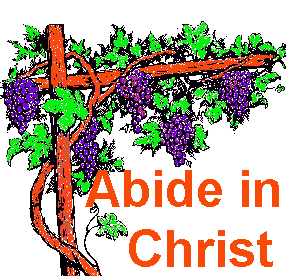Gnosticism was a second
and third century "heresy that denied the deity of
Christ, excused evil conduct on the supposition that
the body is evil, encouraged asceticism, limited the
sufficiency of redemption through Christ, and gave
rise to ritualism, speculation, and low standards of
righteousness" (Russell Bradley Jones, Survey of the
Old and New Testaments, p. 332).
The Gnostics taught a
dualism which held to "a distinction between the
purity of the immaterial world and the
corruptibility of the material world." They held
that the God of creation was not the pure God, that
there was a distinction between Jesus who suffered
on the cross and the Christ who was the transcendent
Savior. They held that the direct revelation they
received gave them unique insight and superiority
over any other Christian writings. This revelation
provided the initiated with access to gnosis, or
knowledge about the true God. They were in direct
competition with authentic Christianity.
The word "secret"
highlights the internal emphasis of the ancient
Gnostic texts of the second and third centuries.
Darrell Bock observes Gnosticism taught, "to know
the secrets is to experience knowledge and
salvation. This knowledge involved views of God very
distinct from the views that have driven the major
wings of the traditional church. Each side of this
dispute recognized that the other side represented a
very distinct expression of Christianity. One could
not easily be both a Gnostic and a traditional-based
Christian." Gnosticism has "very different views of
the Creator God, Jesus, the cross, and salvation."
Moreover, "What is represented in the secret gospels
and related texts is an expression of Christianity
vastly different from that in the texts with which
we are familiar in the New Testament. Neither side
in this dispute sought a coming together."
There were a number of
characteristics of the heresy as described in the
Apostle Paul's letter to the Colossians, and by the
apostle John in his letters.
F. F. Bruce makes this
keen observation about the cult:
"Basically the heresy was
Jewish; this seems clear from the place which it
gave to legal ordinances, circumcision, food
regulations, the Sabbath, new moon and other
prescriptions of the Jewish calendar. But on the
Jewish foundation there had been erected a
philosophical superstructure which was non–Jewish in
origin—an early and simple form of what later came
to be known as Gnosticism. In this part of Asia
Minor the barriers between the Jewish communities
and their pagan neighbors were not very effective.
Social intermingling led to religious fusion, and
the Colossian heresy may be described as a
Jewish–Hellenistic syncretism which had made room
for some Christian elements in its system so as to
attract the young churches of the area."
A. T. Robertson describes
this incipient Gnosticism which was threatening
early Christianity as those who were especially
concerned about the origin of the material universe,
holding that matter was essentially evil. "God is
good and hence could not touch matter. Therefore
they believed that the world was created by
intermediate agencies called aeons
(emanations form God) who came in between God and
matter. On accepting Christianity they at once had
trouble with the person of Christ. Where would He
come in their system? They solved the problem by
making Him one of the subordinate aeons. At
once Christological problems came to the front. Paul
insisted, in reply, that Jesus is head over all
creation visible and invisible, the creator of the
universe (Col. 1:15-17), and the head of the Church,
His body (1:18). In Him all the Godhead dwelleth
bodily (2:9) and He is above all angels (2:18). Some
of the Gnostics said that Jesus and the Messiah were
distinct and that only the Messiah was an aeon,
descending on Jesus at his baptism and leaving him
at the crucifixion, but Paul identifies Christ with
Jesus (2:6). Others held that Jesus was only
apparently a man and really an aeon (Docetic
Gnostics), but Paul replied that He reconciled us to
God by the blood of His cross (1:20) and hence was a
real man as well as God. In practical morals the
Gnostics had two tendencies. On the one hand some
went to license with the idea that sin of the body
could not touch the soul (3:5f). Others reached to
asceticism (2:20-23)." (The Student's
Chronological New Testament, pp. xxxix-xl).
1. It "attacked the
adequacy and the unique supremacy of Christ." Paul
stresses that Jesus is the image of the invisible
God; in Him all fullness of the Godhead dwells in
bodily form (1:15, 19; 2:2, 9).
2. Jesus was the
instrument of the Father in creation of the universe
(1:16, 17).
3. The humanity of Jesus
is also emphasized in Colossians (1:22; 2:9).
4. The Colossians seem to
be preoccupied with astrology.
5. Demonic spirits are
dealt with (1:16; 2:10, 15). William Barclay writes,
"The Colossian false teachers were clearly saying
that something more than Jesus Christ was needed to
defeat the power of the demons."
6. Philosophy they sought
to spoil men and fill them with empty deceit is
evident (2:8).
7. Special days and
rituals are insisted on by the cult (2:16).
8. Legalism and
associated behaviors is evident (2:16, 21). It said,
"Touch not; taste not; handle not."
9. An antinomian streak
is also found (3:5-8).
10. The worship of angels
appears in Colossians (2:18).
11. A "know it all"
snobbery is found in this cult (1:28). Christ alone
was insufficient for them. You needed more "light."
Biblical Christianity says, "Christ alone is
sufficient!"
The appeal of the
philosophical cult is, as F. F. Bruce observes: "to
a certain religious temperament, the more so as it
was presented as a form of advanced teaching for a
spiritual elite. Christians were urged to go in for
this higher wisdom, to explore the hidden mysteries
by a series of successive initiations until they
achieved perfection. Baptism was only a preliminary
initiation. . . But however attractive many might
find this cult, Paul condemns it as specious
make-believe. Far from constituting a more advanced
grade of knowledge than that presented in the
apostolic preaching, it was totally inconsistent
with that preaching and threatened to overthrow the
foundations of Christianity. . . ."
Frederica Mathewes-Green
gives a good comparison and contrast between the
first century Christianity and Gnosticism that
developed during the next couple of centuries. This
is why the early Christians declared Gnosticism
heretical and clearly rejected it.
"Gnosticism rejected the
body and saw it as a prison for the soul;
Christianity insisted that God infuses all creation
and that even the human body can be a vessel of
holiness, a 'temple of the Holy Spirit.' Gnosticism
rejected the Hebrew Scriptures and portrayed the God
of the Jews as an evil spirit; Christianity looked
on Judaism as a mother. Gnosticism was elitist;
Christianity was egalitarian, preferring 'neither
Jew nor Greek, male nor female, slave nor free.'
Finally, Gnosticism was just too complicated.
Christianity maintained the simple invitation of the
One who said, 'Let the little children come unto
me.' Full-blown science-fiction Gnosticism died
under its own weight."
Paul developed his
response with one of the greatest pieces ever
written about Christ in Colossians 1:13-22. Modern
man needs to hear this message of Christ’s supremacy
over all the powers in the universe. Bruce adds,
"Christ crucified and risen is Lord of all; all the
forces in the universe are subject to Him,
well–disposed and ill-disposed alike. To be united
to Christ by faith is to be liberated from the
thralldom of hostile powers, to enjoy perfect
freedom, to gain the mastery over the dominion of
evil because Christ’s victory is ours."
Historic first century
Christianity and Gnosticism were two very different
approaches to Christianity. In fact, they were so
very different from each other as to be incompatible
from the view of each school. And they still are
regardless of what the "new" school of theology is
introducing in our day.
The apostle John also
dealt with incipient Gnosticism in his epistles.
Title: Gnosticism
PDF
Series:
Introduction to Bible Books



